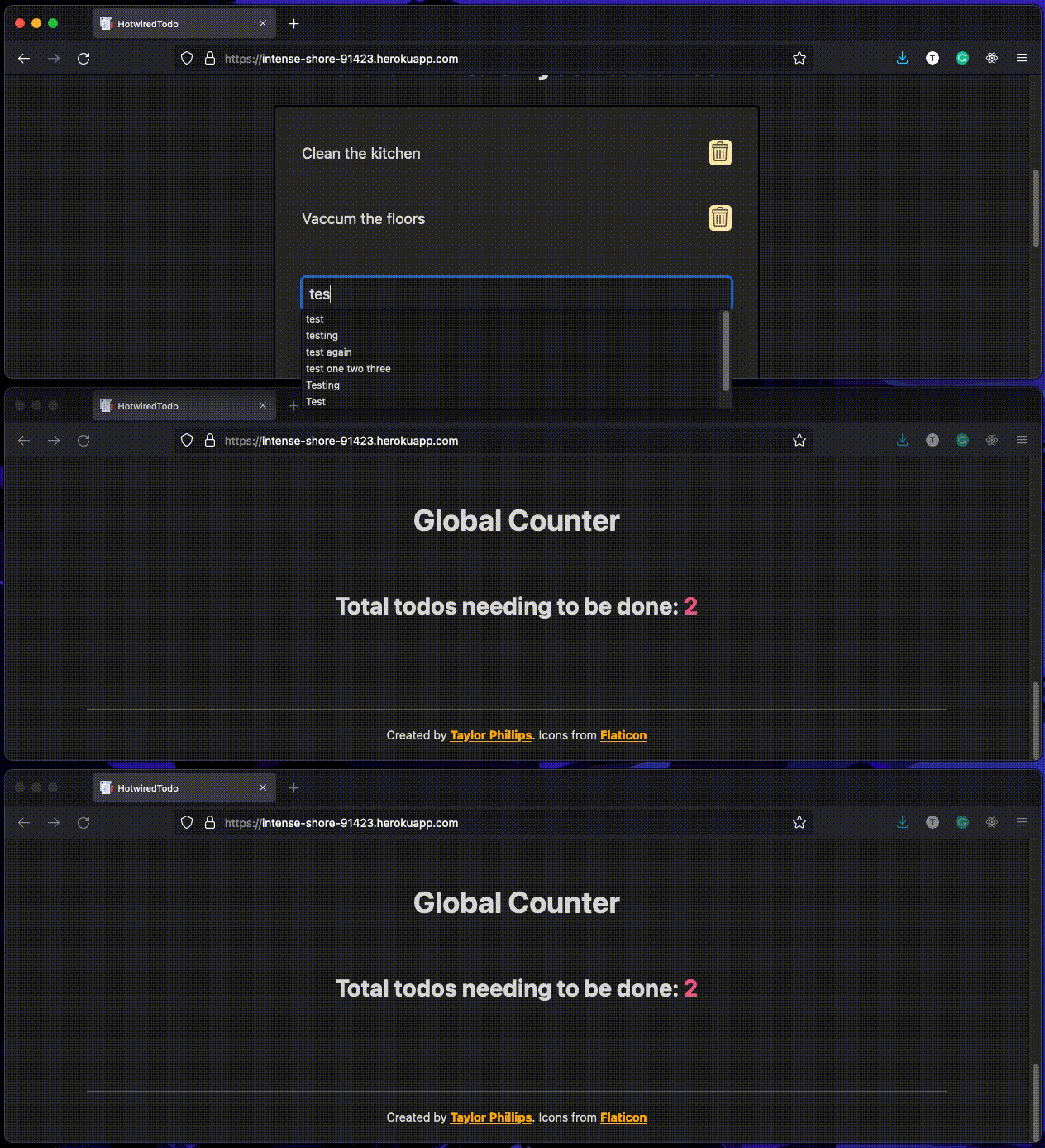A simple single-page application to experiment with the Hotwire tech stack which is now included by default in Rails 7.
Turbo-frames are the main mechanism used to create this Rails SPA. You'll notice that the URL never changes even when navigating to new content, just like one would expect with a React SPA.
This is done by using a turbo-frame that I referenced by the ID of main-content. All views and partials within the main section of the HTML document are wrapped by this turbo-frame.
<body>
<header></header>
<main>
<turbo-frame id="main-content">
<!-- Content goes here -->
</turbo-frame>
</main>
<footer></footer>
</body>Turbo-streams allow you to send fragments of a page change over WebSockets. You can see this in action when adding and deleting a todo item. Here's what the users/todos_controller looks like:
module Users
class TodosController < ApplicationController
def create
@todo = Todo.create(todo_params)
end
def destroy
todo = Todo.find(params[:id])
todo.destroy
render turbo_stream: turbo_stream.remove(todo)
end
private
def todo_params
params.permit(:user_id, :description)
end
end
endThe create action uses some rails magic to render the file.
For the destroy action we explicitly tell it to render a turbo stream. Without specifying a partial it will look for one based on the file structure. So in this case it looks for . We also pass it the object so it knows which one to remove from the page based on the
dom_id method.
Turbo stream broadcasts should be used when you need to broadcast a page update to all users at the same time. This will allow every user to see the changes as they happen. More information can be found here: https://github.com/hotwired/turbo-rails/blob/main/app/models/concerns/turbo/broadcastable.rb
To get broadcasts working in production on Heroku you also need to enable the redis gem in your rails application and then add redis to Heroku. If you're running on a hobby dev you can easily do that from the command line like this:
$ heroku addons:create heroku-redis:hobby-dev
You can see an example of turbo-streams and turbo-broadcasts working in conjunction below:
I found Stimulus really simple and convenient to use for adding sprinkles of javascript where needed. The largest Stimulus controller for this application is the password_controller which renders different images to provide the user feedback as to when their password meets the requirements being enforced by the User model.

